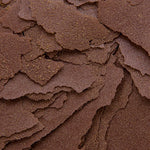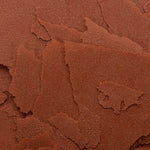Fish Flakes: Antibiotic
We are unable to acquire the meds any longer, so as these sell out, they will not be restocked.

Antibiotic II: This antibiotic flake attacks gram-positive bacteria. Since many heterotrophic bacteria are also gram-positive, using medicated fish flake food is by far the best way to combat this type of bacteria. Feed this fish food exclusively for 10 days.
Active ingredient: Oxy tetracycline Hydro chloride. Also containing beta glucan for immune boosting. This is water-soluble, so the Proper Feeding of Medicated Fish Food is a must (See Article section of Tabs). We recommend feeding our Prevent & Recover Flake for 1 week after the medicated feeding is discontinued. For ornamental fish use only.
Packed in a Black Foil zip-lock bag, which will keep your food fresher for a longer time.
Inventory Last Updated: Dec 15, 2025
Bought this for a couple of my newly acquired koi angels who developed a pretty bad case of fin rot. Luckily they responded well to daily water changes, and were already on the mend, but I figures these would give them an even better chance. Well... they wouldn't touch it! No, I'll actually take that back - both fish actually DID try it, but immediately spit it out! So then I took a super small amount and tried a little in a tank of 50 healthy young black marble angels... gotta say... they don't like it either! Do your fish actually eat this??!!
And it's NOT like these fish have never had flakes - in fact, I tried putting in Bug Bites flakes as a control in the sick AND healthy tanks and ALL fish gobbled them up eagerly. Not sure what to think - it smells fine, but I can't force them to eat it. Disappointed.
Yes, our fish eat it very well, but it requires some preparation in some situations. The medication does not taste good, so the fish must be eating well to begin with, then they have to be introduced to it when they are very hungry. You may have to fast them for 2 to 3 days before giving them a bite. It should then be increased gradually with each feeding, and no other food can be given. Lastly, if they don't eat it right away, you have to remove it. Food that rots on the bottom of the tank will permanently turn them away from trying it.
It should be noted that many people have tried this flake successfully, which you can see by the reviews.
My Angel had a white spot (which was growing) on one eye… I had been mixing med for more than a month (feeding to him) with no change!
I have a planted tank, so looking for another option to feed the medication.
He’s been eating the flakes (as soon as they hit the surface) almost 10 days now and his eye is completely healed!
Oh my goodness, I am so happy I discovered this medication!
Thank you!!
My fancy goldfish recovered nicely using this medication.
I find that this is the only medication that is successful in the recovery of disorders that occur in Angel fish.
My duck has suffered w/bumblefoot. I tried to remove it & not sure if I did but she’s making a comeback. I believe the antibiotic fish flakes are helping her internally fight off infection as her foot heals. She’s back to walking pretty good.
Bought this for a couple of my newly acquired koi angels who developed a pretty bad case of fin rot. Luckily they responded well to daily water changes, and were already on the mend, but I figures these would give them an even better chance. Well... they wouldn't touch it! No, I'll actually take that back - both fish actually DID try it, but immediately spit it out! So then I took a super small amount and tried a little in a tank of 50 healthy young black marble angels... gotta say... they don't like it either! Do your fish actually eat this??!!
And it's NOT like these fish have never had flakes - in fact, I tried putting in Bug Bites flakes as a control in the sick AND healthy tanks and ALL fish gobbled them up eagerly. Not sure what to think - it smells fine, but I can't force them to eat it. Disappointed.
Yes, our fish eat it very well, but it requires some preparation in some situations. The medication does not taste good, so the fish must be eating well to begin with, then they have to be introduced to it when they are very hungry. You may have to fast them for 2 to 3 days before giving them a bite. It should then be increased gradually with each feeding, and no other food can be given. Lastly, if they don't eat it right away, you have to remove it. Food that rots on the bottom of the tank will permanently turn them away from trying it.
It should be noted that many people have tried this flake successfully, which you can see by the reviews.
My Angel had a white spot (which was growing) on one eye… I had been mixing med for more than a month (feeding to him) with no change!
I have a planted tank, so looking for another option to feed the medication.
He’s been eating the flakes (as soon as they hit the surface) almost 10 days now and his eye is completely healed!
Oh my goodness, I am so happy I discovered this medication!
Thank you!!
My fancy goldfish recovered nicely using this medication.
I find that this is the only medication that is successful in the recovery of disorders that occur in Angel fish.
My duck has suffered w/bumblefoot. I tried to remove it & not sure if I did but she’s making a comeback. I believe the antibiotic fish flakes are helping her internally fight off infection as her foot heals. She’s back to walking pretty good.
Don't be fooled into thinking a fish food is good just because fish readily eat it. Children prefer candy over broccoli, but it doesn't mean that candy is better for them. A taste preference can easily be acquired through hunger. Getting them to prefer foods that are also very good for them, is the trick. Even though it's not always needed, our way of getting them to develop a taste for a new food, works. It is described below.
Fish won't eat their new food? When switching to a new fish food, we highly recommend getting the fish very hungry. Often times, fish become accustomed to a particular fish food and will not eat another, no matter how good it is for them. When introducing a new food, we usually don't feed the fish for 24-48 hours, depending on the size of the fish, and then offer only one bite per fish (key to success). Remove food after 1 minute if uneaten. Do this every few hours. It may take several days, especially for larger fish that have become accustomed to other fish foods. Don't worry, fish can easily and safely go much longer than this without food. Allowing the food to sit uneaten in the tank for even a couple hours can turn them off to the food permanently. If you don't give in, this method works every time.
Using this technique, you can quickly get most fish to eat a new food like ravenous piranha without much effort. In fact, we have to be careful feeding, because they often jump out of the tank in their feeding frenzy. Watch some of our fish feeding in the below video. Keep in mind, they were first introduced to these fish foods using this technique.




